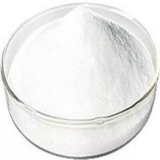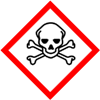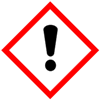 |
Aceclofenac SDS Safety Data Sheet of Supplier Exporter Manufacturers' Representative |
Email: info@ammol.org |
Call Toll Free +1-855-552-6665 |
Quick Links to Products: Aceclofenac | Acesulfame | Acesulfame Potassium | Ascorbic Acid | Aspartame | Aspartame Acesulfame | Calcium Dobesilate | Casein Purified | Carbasalate Calcium | and more -- |
Aceclofenac
CAS Number: 89796-99-6
Molecular Formula: C16H13Cl2NO4
Molecular Weight: 354.18

Aceclofenac
Aceclofenac SDS, Safety Data Sheet
MSDS Sheet, Material Safety Data Sheet 20-Jan-25
1. Product Identification
Product Name & Other Names: Aceclofenac.
CAS No.: 89796-99-6
EINECS EC Code: 641-844-5
Relevant uses and uses advised against (if any): Industrial Manufacturing.
Suppliers: As per letterhead.
Supplier: American Molecules, 9910 Bent Oak Dr, Houston, TX 77040, USA.
Call Toll Free: 1-855-55-AMMOL 1-855-552-6665.
In case of emergency contact: Will be given with the supply.
2. Hazards Identification
GHS, Globally Harmonized System Classification in accordance with 29 CFR 1910
Classification according to Regulation (EC) No 1272/2008
Acute toxicity, Oral (Category 3) H301
Eye irritation (Category 2) H319
Labeling according to GHS USA & Regulation (EC) No 1272/2008
GHS Label Elements  Toxic |
GHS Label Elements |
Signal Word: Danger
Hazard Statements:
H301: Toxic if swallowed
H319: Causes serious eye irritation.
Precautionary Statements
P202: Do not handle until all safety precautions have been read and understood.
P260: Do not breathe dust/fume/gas/mist/vapors/spray.
P270: Do not eat, drink or smoke when using this product.
P280-Wear protective gloves/protective clothing/eye protection/face protection.
P301+P310+330: IF SWALLOWED: Rinse mouth and immediately call a POISON CENTER or doctor/physician.
P303+P361+P352: IF ON SKIN (or hair): Remove/Take off immediately all contaminated clothing. Wash with plenty of soap and water.
P304+P341+P311: IF INHALED: If breathing is difficult, remove to fresh air and keep at rest in a position comfortable for breathing. Call a POISON CENTER or doctor/physician.
P305+P351+P338: IF IN EYES: Rinse cautiously with water for several minutes. Remove contact lenses, if present and easy to do. Continue rinsing.
P332+P313: If skin irritation occurs: Get medical advice/attention.
P337+P313 If eye irritation persists: Get medical advice/ attention.
3. Composition/Information on Ingredients
Product Name & Other Names: Aceclofenac.
CAS No.: 89796-99-6
EINECS EC Code: 641-844-5
4. First Aid Measures
Always seek medical attention after first aid measures are provided.
Inhalation: If inhaled, it will cause irritation. Remove the victim to fresh air. If not breathing, give artificial respiration. If breathing is difficult, give oxygen. Get medical attention.
Ingestion: Contact medical center quickly. Never give anything by mouth to an unconscious person. Get medical attention.
Skin Contact: Immediately flush skin with plenty of water for at least 15 minutes. Remove contaminated clothing and shoes. Get medical attention. Wash clothing before reuse.
Eye Contact: It can cause severe irritation and harm to eyes. Check for and remove any contact lenses. Immediately flush your eyes with running water for at least 15 minutes, keeping eyelids open. Get medical attention.
5. Fire Fighting Measures
Fire: Toxic fumes, hydrogen chloride, nitrogen oxides, carbon dioxide and carbon monoxide may be formed in fire.
Explosion: No information found.
Fire Extinguishing Media: Dry chemical, foam or carbon dioxide and water spray. Avoid solid water jet.
Special Information: In the event of a fire, wear full protective clothing and NIOSH-approved self-contained breathing apparatus with full face piece operated in the pressure demand or other positive pressure mode.
6. Accidental Release Measures
Personal precautions, protective equipment, and emergency procedures: Avoid breathing dust/fumes/gas/mist/vapors/spray. Use individual protective equipment (waterproof boots, suitable protective clothing, safety glasses, etc.).
Environmental precautions: Do not let the product enter drains, soil, or water sources.
Methods and materials used for containment cleanup procedures and Storage:
Small Spill: Sweep and shovel and dispose of as hazardous waste. Keep in suitable, closed containers for disposal.
Large Spill: Contain spilled material. Sweep and shovel and dispose of as hazardous waste. Keep in suitable, closed containers for disposal. Avoid dust/mist formation. Keep away from heat. Keep away from sources of ignition. Contact Environment Agency. Wear full protective equipment and ensure proper ventilation.
7. Handling and Storage
Precautions for safe handling: Toxic. Do not swallow. Apply according to good manufacturing and industrial hygiene practices. Avoid prolonged or repeated exposure. Ensure proper ventilation. Wash thoroughly after handling. Do not drink, eat, or smoke while handling. Avoid contact with skin, eyes, and clothing. Minimize dust generation. Avoid breathing dust/fumes/gas/mist/vapors/spray. Keep container tightly closed. Avoid ingestion and inhalation. Use individual protective equipment (waterproof boots, suitable protective clothing, safety glasses, etc.).
Conditions for safe storage, including any incompatibilities: Store in cool, dry, and ventilated area away from heat sources and protected from sunlight in tightly closed original container. Keep air contact to a minimum. Do not leave the material container open. Store protected from heat, sparks and ignition sources and incompatible materials. Avoid inhalation of dust/mist/vapor. Do not store with incompatible materials like strong oxidizing agents. Containers may be hazardous when empty since they retain product residues. Store away from foodstuffs. Storage: Room temperature. Recommended in a cool and dark place, <15C.
8. Exposure Controls/Personal Protection
Airborne Exposure Limits: Not established.
Ventilation System: A system of local and/or general exhaust is recommended to keep employee exposures as low as possible.
Personal Respirators (NIOSH Approved): For conditions of use where exposure to the substance is apparent and engineering controls are not feasible, consult an industrial hygienist.
Skin Protection: Wear impervious protective clothing, including boots, gloves, lab coat, apron or coveralls, as appropriate, to prevent skin contact.
Eye Protection: Use chemical safety goggles and/or a full-face shield where splashing is possible. Maintain eye wash fountain and quick-drench facilities in work area.
Other Control Measures: Maintain good housekeeping in work area. Handle in accordance with good industrial hygiene and safety practice.
9. Physical and Chemical Properties
Appearance: White to off-white powder or crystals.
Odor: No information found.
Odor threshold: No information found.
pH: No information found.
Relative density: No information found.
Melting Point: 149C to 153C literature.
Initial boiling point and boiling range: Not available.
Flash point: Not available.
Auto-ignition temperature: Not available.
Decomposition temperature: No information found.
Upper/lower flammability or explosive limits: No information found.
Vapor pressure: No information found.
Vapor density: No information found.
Evaporation rate: No information found.
Flammability (solid, gas): No information found.
Partition coefficient: n-octanol/water: No information found.
Solubility: Practically insoluble in water. Freely soluble in acetone.
Viscosity: No information found.
10. Stability and Reactivity
Stability: Stable under ordinary conditions of use and storage.
Hazardous Decomposition Products: Toxic fumes, hydrogen chloride, nitrogen oxides, carbon dioxide and carbon monoxide may be formed in fire.
Hazardous Polymerization: Not reported.
Incompatibilities: Strong oxidizing agents.
Conditions to Avoid: Heat, flames, moisture, light, ignition sources and incompatibles.
11. Toxicological Information
Oral rat LD50: 130 mg/kg.
Carcinogenicity: Not reported as carcinogen by any agency.
Reproductive Toxicity: No information found.
Developmental Effects: No information found.
Teratogenicity: No information found.
12. Ecological Information
Persistence and Degradability: No No information found.
Bioaccumulation/ Accumulation: No information found.
Mobility: No information found.
Results of PBT and vPvB assessment: No information found.
Environmental Toxicity: No information found.
13. Disposal Considerations
Whatever cannot be saved for recovery or recycling should be managed in an appropriate and approved waste disposal facility. Follow all the pollution control rules.
14. Transport Information
DOT USA, TDG Canada & ADR/RID Europe:
UN Number: UN 2811
Proper shipping name: TOXIC SOLIDS, ORGANIC, N.O.S. (ACECLOFENAC)
Class: 6.1, Packing group: III.
IMDG/IMO & IATA/ICAO:
UN Number: UN 2811
Proper shipping name: TOXIC SOLIDS, ORGANIC, N.O.S. (ACECLOFENAC)
Class: 6.1, Packing group: III.
15. Regulatory Information
USA:
SARA 311/312: Seer section 2.
California Prop 65: Not listed.
Section 16 - Additional Information
Disclaimer:
**************************
Our company provides this MSDS sheet in good faith but makes no representation as to its comprehensiveness or accuracy. This SDS sheet is intended only as a guide to the appropriate precautionary handling of the material by a properly trained person using this product. The above information has been compiled from various sources and has the possibility of discrepancy and being out-dated information. Individuals receiving the information must exercise their independent judgment and do further search in determining its appropriateness for a particular purpose. In no case shall our company be liable to loss or damages by the product user.
**************************
Please visit Main Page of Aceclofenac Suppliers.
American Molecules, also known as ammol.org is a distributor, supplier and manufacturers' representative of all types of Pharmaceuticals, Functional Ingredients, Excipients and Specialty Chemicals in Texas USA. Our principals manufacture supply and export USP NF BP, Ph Eur, etc grades of chemicals pure and reagent grade, mineral fortifiers, FCC food grade. Tailor made particle size and customized specifications are offered. The principal's facility is having one or more of the certifications like FDA approval and GLP, cGMP, ISO9001, ISO14001, ISO/IEC 17025, ISO22000, FSSC 22000, ISO45001, FSSAI, Kosher, HALAL, COPP, WHO-GMP certified and Written Confirmation (WC) for export to Europe is available. The manufacturers suppliers and exporters observe WHO Good Manufacturing Practices and Good Laboratory Practices.





Suppliers and Manufacturers' Representative:

9910 Bent Oak Dr
Houston, TX 77040, USA
Call Toll Free: 1-855-55-AMMOL 1-855-552-6665
Email: info@ammol.org
